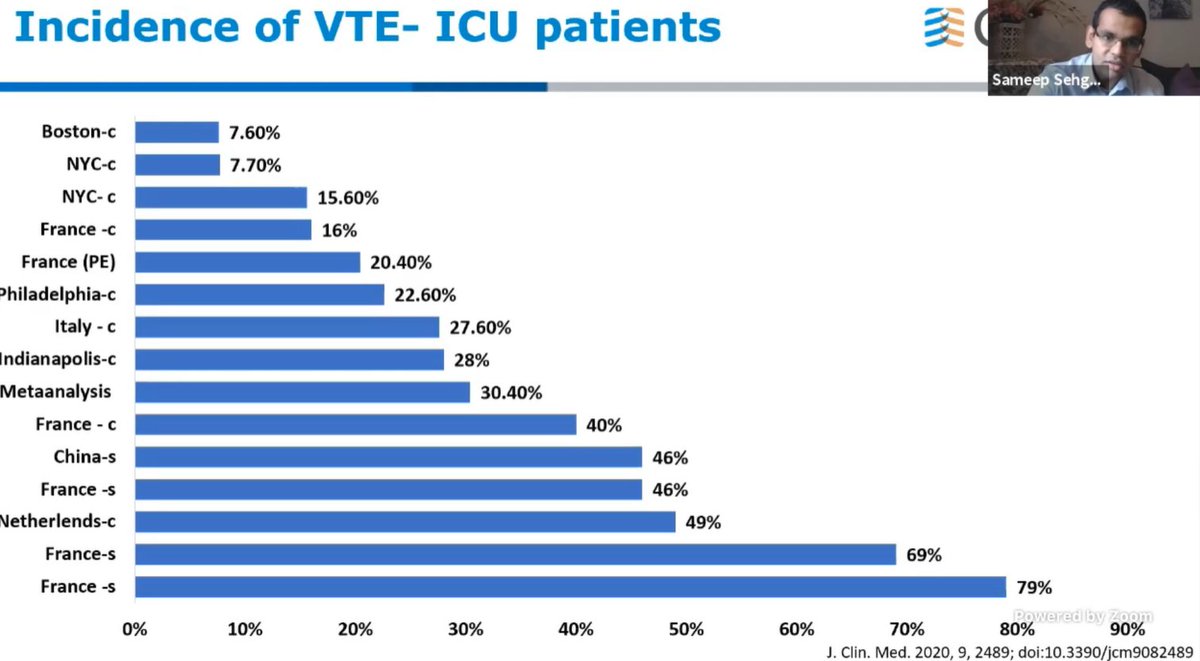
"Mechanical Ventilation Supply and Options for the COVID-19 Pandemic" in @AnnalsATS
Here are some of our key takeaways... a #COVID19 🧵to assist in planning for the next surge.
atsjournals.org/doi/abs/10.151…
Here are some of our key takeaways... a #COVID19 🧵to assist in planning for the next surge.
atsjournals.org/doi/abs/10.151…
We faced intense strain from #COVID19 in Boston, an incredibly well resourced city.
The Hawaiian islands have about 250 ICU beds & 500 ventilators for a population of about 1.4m.
Haiti, with 11m people, can provide MV to <100 people.
#COVID19 can create a crisis anywhere.
The Hawaiian islands have about 250 ICU beds & 500 ventilators for a population of about 1.4m.
Haiti, with 11m people, can provide MV to <100 people.
#COVID19 can create a crisis anywhere.
We describe contingency options for hospitals and providers to reduce mechanical ventilation demand, increase supply, create new supply in crisis situations, and address staffing needs. atsjournals.org/doi/abs/10.151…
🫁 Reducing Ventilator Demand:
• Utilize non-invasive oxygenation & ventilation, especially HFNC & CPAP
• Consider helmet systems for NIV
• Encourage self-proning
• Utilize facemask & filters with HFNC and typical NIV
• Emphasis on goals of care conversations
• Utilize non-invasive oxygenation & ventilation, especially HFNC & CPAP
• Consider helmet systems for NIV
• Encourage self-proning
• Utilize facemask & filters with HFNC and typical NIV
• Emphasis on goals of care conversations
⚡️We urge professional societies to review the evidence and release statements supporting the use of HFNC and NIV. Adoption will otherwise be heavily institution dependent and delayed. This is an opportunity for guidelines to make an immediate and critical impact on #COVID19.
🫁Maximize Available Supply:
• OR Ventilators w anesthesia
• Ambulatory surgical sites
• Sharing resources based on need w/in a region
• State & national resources such as the Strategic National Stockpile
• Industry coordination
• Support long term care facilities
• OR Ventilators w anesthesia
• Ambulatory surgical sites
• Sharing resources based on need w/in a region
• State & national resources such as the Strategic National Stockpile
• Industry coordination
• Support long term care facilities
🫁 Create New Sources of Potential Ventilation
• These are sub-optimal solutions that may be necessary in a crisis.
• Adapt BPAP/CPAP for invasive use
• Alternative devices, ex: Oxylator or GO2VENT
• Recommend caution & restraint on multiple-limb simultaneous ventilation
• These are sub-optimal solutions that may be necessary in a crisis.
• Adapt BPAP/CPAP for invasive use
• Alternative devices, ex: Oxylator or GO2VENT
• Recommend caution & restraint on multiple-limb simultaneous ventilation
🫁 Staffing Considerations
• Pyramid model for extending intensivist staffing
• Develop specialized teams: for example, dedicated procedure & proning teams
• Prepare & deploy basic critical care training across nursing staff- especially re: vent alarms
• Develop RT pipeline
• Pyramid model for extending intensivist staffing
• Develop specialized teams: for example, dedicated procedure & proning teams
• Prepare & deploy basic critical care training across nursing staff- especially re: vent alarms
• Develop RT pipeline
💊A note on medication shortages...
Everyone should plan for expected shortages of critical care medications. Innovations like this can help too. In a crisis, every little bit helps...but we should all advocate for stable medication pipelines.
Everyone should plan for expected shortages of critical care medications. Innovations like this can help too. In a crisis, every little bit helps...but we should all advocate for stable medication pipelines.
https://twitter.com/KAckerB_PharmD/status/1245833286619987970?s=20
Unfortunately, #COVID19 will likely create an incredible burden of critical illness this winter. Strategies to reduce ventilator demand, increase supply, create new supply, and adequately staff that supply can help mitigate the sizable challenges that may be ahead.
Thanks for reading, please check out the full article and share your comments! atsjournals.org/doi/abs/10.151…
and of course invasive mechanical ventilation - life support- is about far more than the vent! See our thread below for more on that:
https://twitter.com/laxswamy/status/1243314198484000770?s=20
• • •
Missing some Tweet in this thread? You can try to
force a refresh










